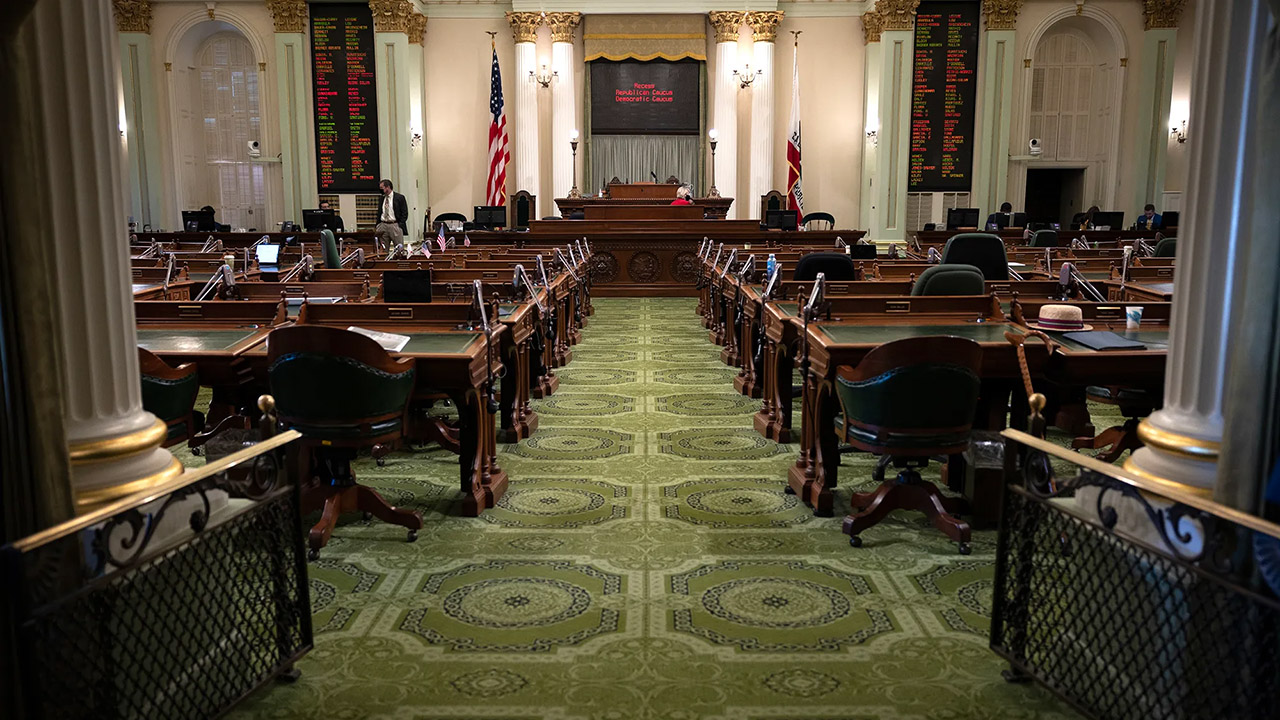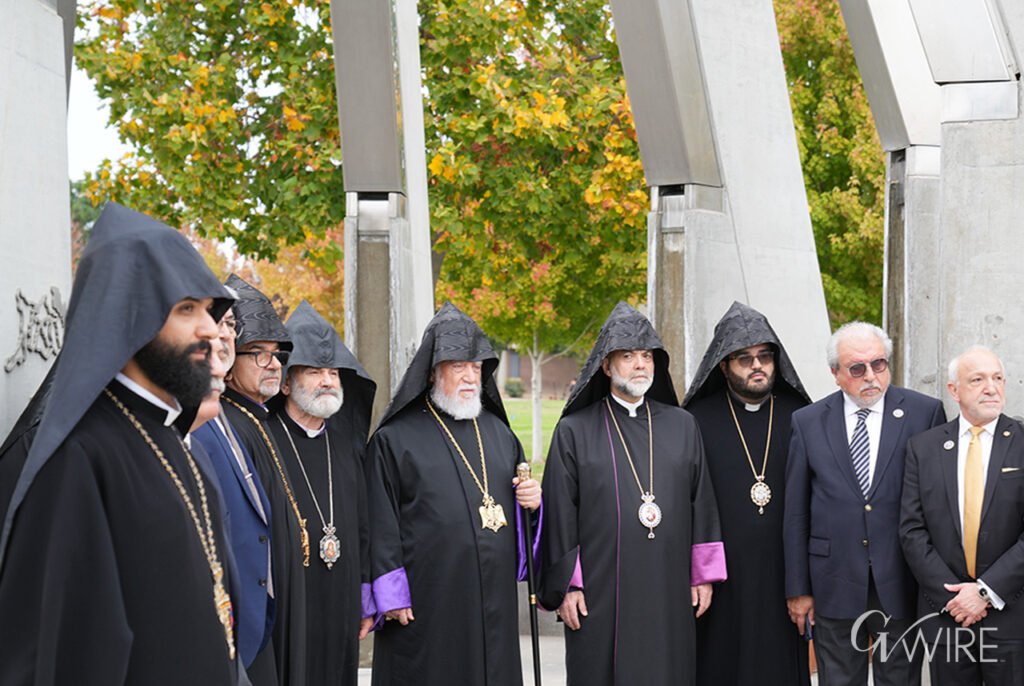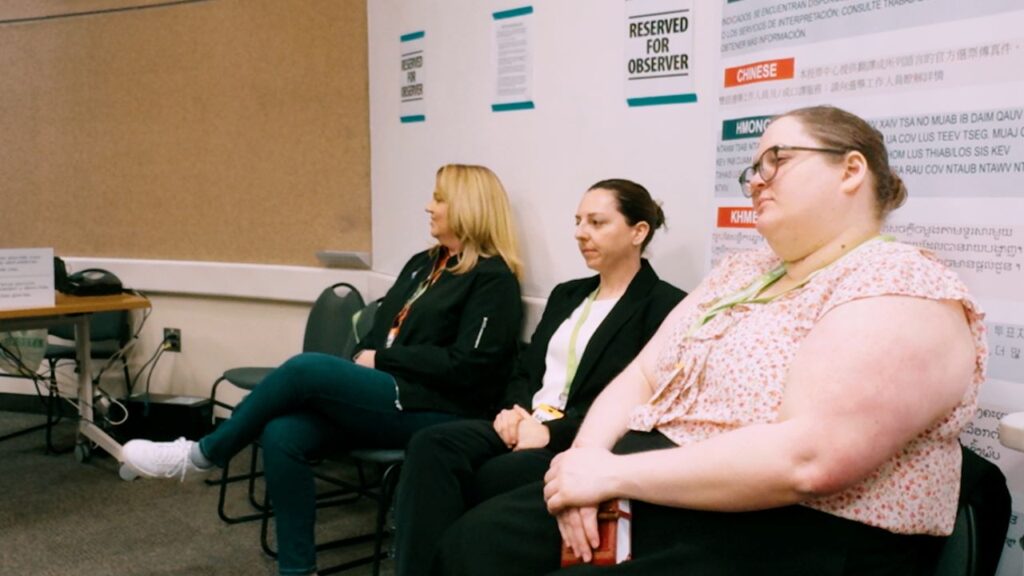California Legislature is poised for historic gender parity as women gain seats in Senate and Assembly. (CalMatters/Miguel Gutierrez Jr.)

- Senate to reach 50% women for the first time, with potential for overall legislative gender parity.
- 36 of 55 women serving in the Legislature next year will be women of color, up from 32 currently.
- Democrats maintain supermajority, but close races could give Republicans two additional seats.
Share
|
Getting your Trinity Audio player ready...
|
California’s state Senate will be at least 50% women for the first time in history and, depending on a few undecided races, the state Legislature overall could reach gender parity for the first time.

Sameea Kamal
CalMatters
“What is a milestone like gender parity for, if not a moment like this?” said Susannah Delano, executive director of Close the Gap California, an advocacy group to elect progressive women, referring to potential policies from the incoming Trump administration. “State legislatures have and will continue to be the front line for many of those impacted to contest harmful policies and protect lives at risk.”
At least three additional Senate districts will be represented by women in the next two-year session, raising the number of women from 18 to 21 in the 40-member chamber. One member, Sen. Janet Nguyen, is expected to leave if she wins her bid for Orange County supervisor.
There are currently 50 women among the state’s 120 legislators in both the Senate and the state Assembly.
With this election, that total number will be at least 55 and as many as 60. The state Assembly currently has 32 women, though eight will leave this year due to term limits or to switch to the Senate. The Assembly will see a net gain of at least four women and as many as seven.
Related Story: California Beat Trump in Court His First Term. It’s Preparing New Cases ...
Historic Turnover and Diversity
The increase in women’s representation is part of a historic level of turnover in the Legislature, with at least 30 new members, and as many as 36.
Assemblymember Cecilia Aguiar-Curry, incoming chairperson of the California Legislative Women’s Caucus, told CalMatters adding new members can help expand the caucus’s issues because they might bring expertise on healthcare, artificial intelligence or other policy issues that impact women.
“The big question for me is: how are we going to use our power?” said Aguiar-Curry, who represents Davis.
In 2022, voters elected the most diverse Legislature in history. Currently, 50 members are women and 63 of the 120 members are people of color, according to demographic data from the California State Library.
Based on election results, 36 of the 55 women who will serve in the Legislature next year are women of color, up from 32.
Votes are still being counted to see the full picture of change in this year’s class, including more on age, ethnicity and party.
Related Story: California Governor Calls Special Session to Protect Liberal Policies From ...
Political Landscape and Special Election
Democrats will firmly hold on to their supermajority. But there are seven races in which challengers from opposing parties could unseat incumbents — and, depending on the uncalled races, give Republicans two more seats.
Of the 30 seats that will be held by newcomers to the Legislature, 21 have been decided and eight are still too close to call.
Also, one of the 30 seats for a newcomer now belongs to former Republican Assemblymember Vince Fong, who remained on the ballot even though he was elected to Congress in a special election earlier this year. Voters chose Fong for the Assembly seat, so Gov. Gavin Newsom is expected to call a special election to replace him.
Other caucuses in the Legislature are awaiting results, but the Latino Caucus expects to gain at least one member.
If it reaches parity, the Women’s Caucus would join the California Legislative LGBTQ Caucus, which reached parity in 2022 with a record high 10% representation.
Related Story: California Governor Calls Special Session to Protect Liberal Policies From ...
This election, the Caucus is losing three of its members, but will add three new ones to maintain its membership — and possibly gain two seats, depending on the outcomes of toss-up races.
And while representation can have its limits in a Legislature that often votes in partisan lockstep, advocates say representation can still make an impact.
For the LGBTQ caucus, reaching parity was helpful not just in passing legislation, but in blocking bills that could be harmful, said Tom Temprano, managing director of LGBTQ+ rights advocacy group Equality California.
“We can’t pretend that the threat of Legislatures taking up anti-LGBTQ policy positions somehow doesn’t impact California, because it did, and it does, and frankly — with Donald Trump in the White House — it increasingly will, moving forward.”
The Legislature will convene on Dec. 2 for its “organizing session,” where new members are sworn in. They will immediately start a special session called Thursday by Gov. Gavin Newsom to prepare for the Trump administration.
About the Author
Sameea Kamal covers politics for CalMatters, with a focus on democracy, representation and accountability.
About CalMatters
CalMatters is a nonprofit, nonpartisan newsroom committed to explaining California policy and politics.
RELATED TOPICS:
Categories

US Snubs UN Meeting on Its Human Rights Record

Fresno DUI Patrols Set for Saturday


















